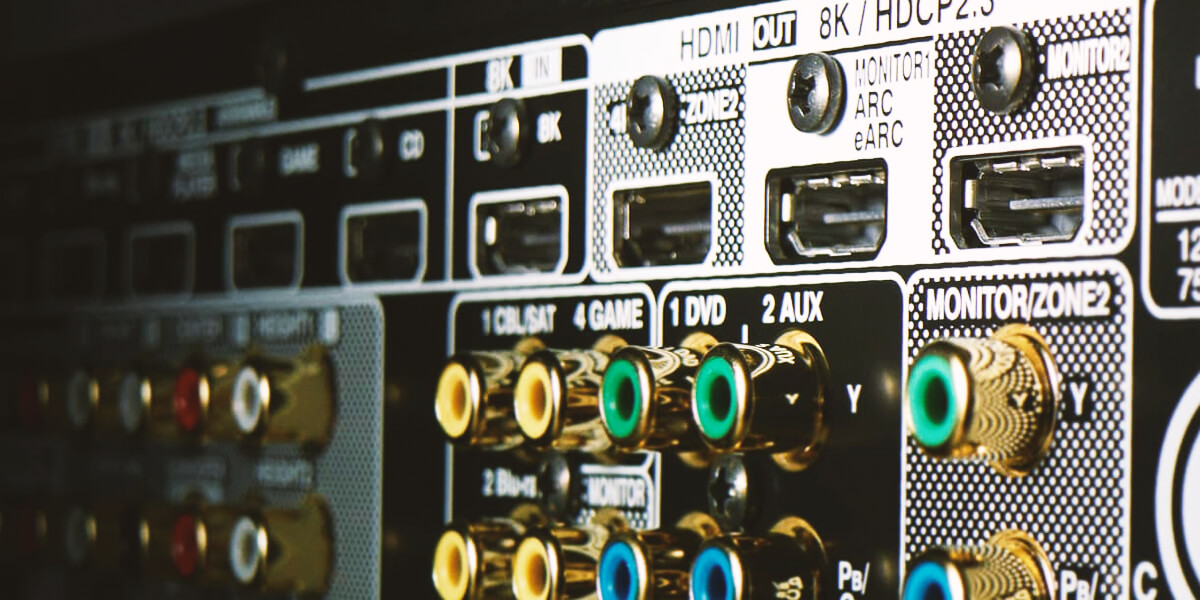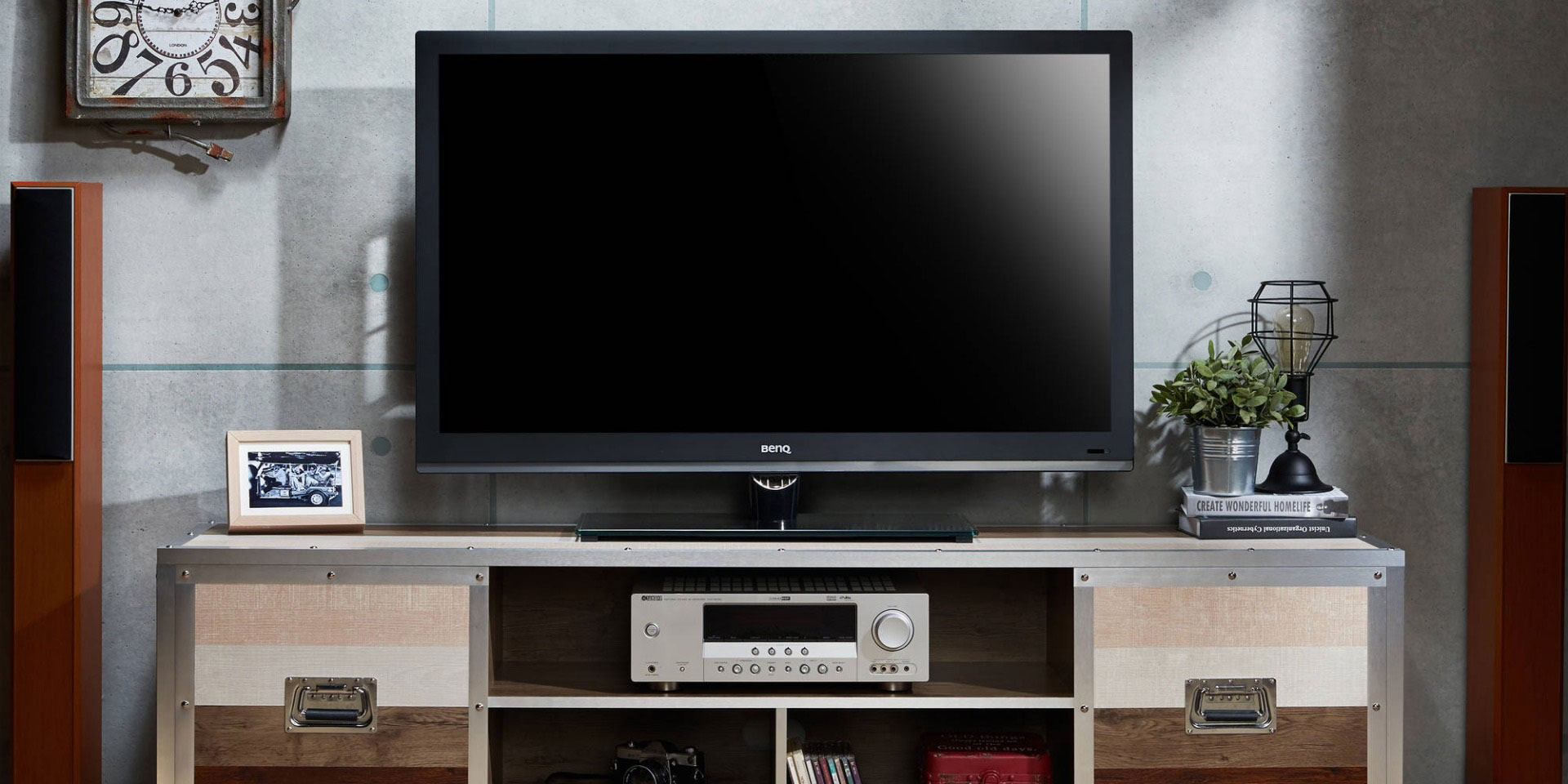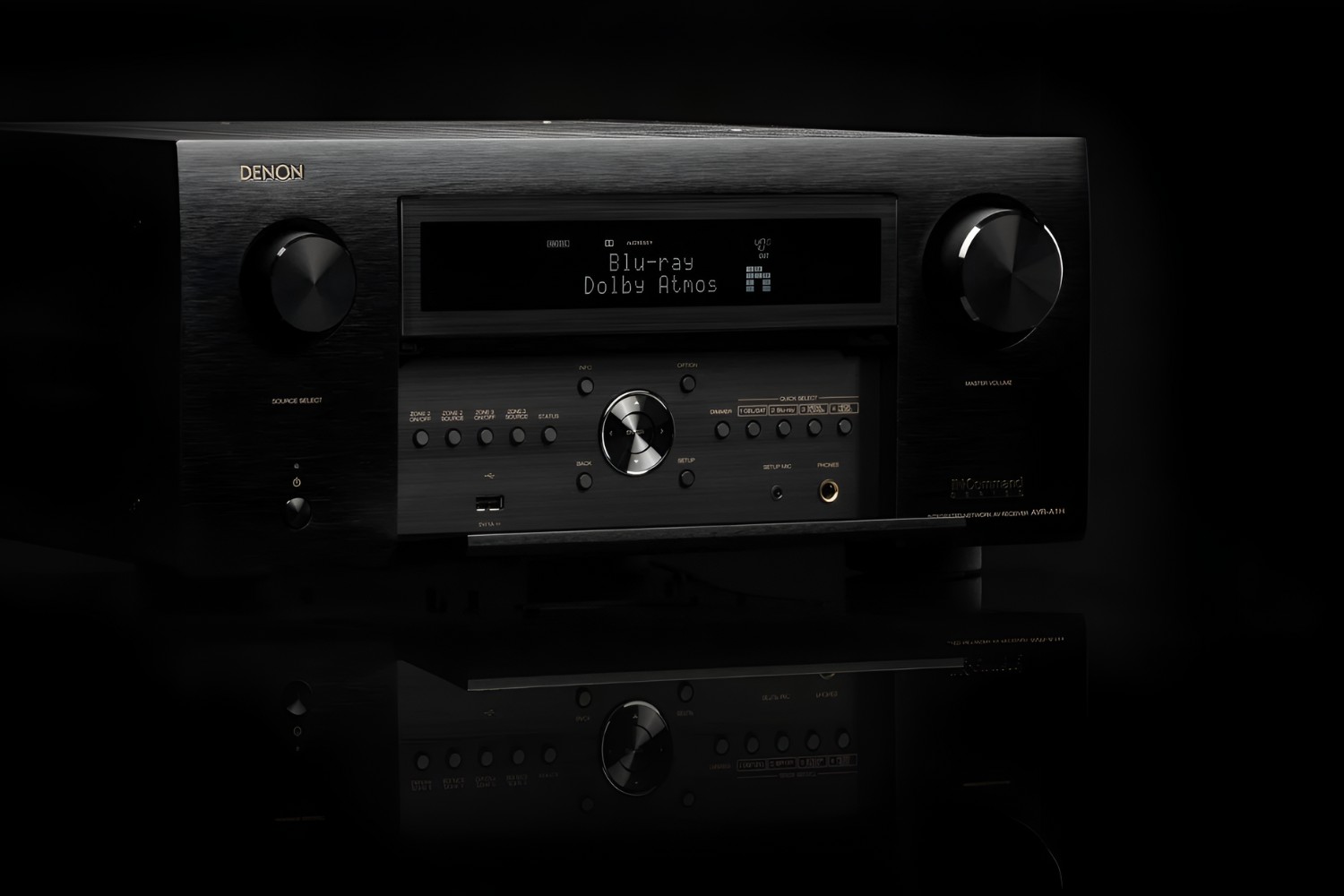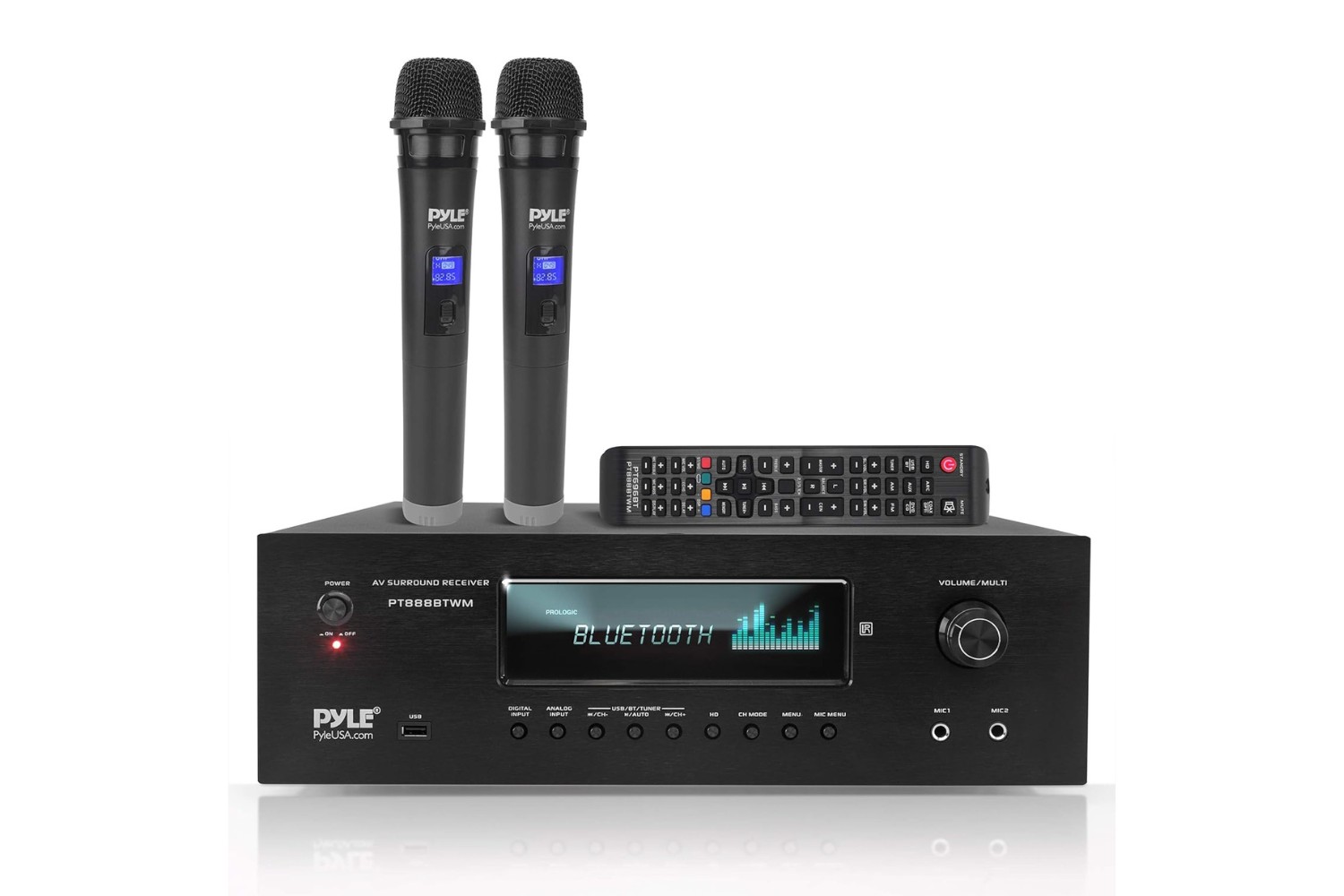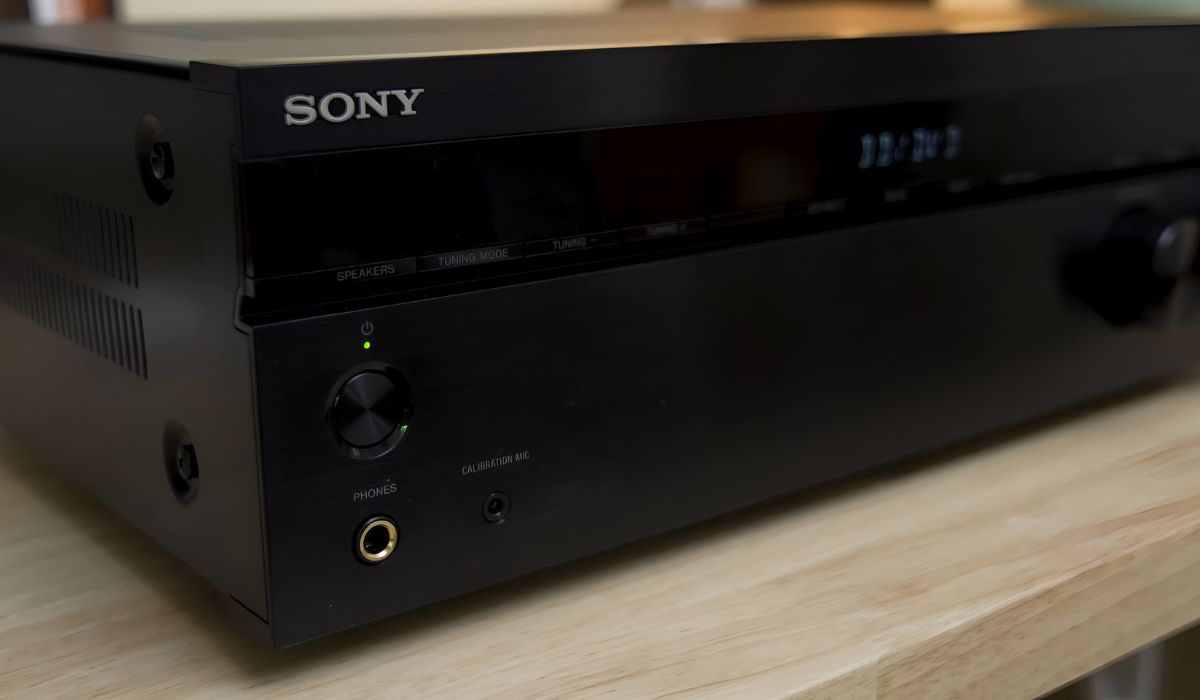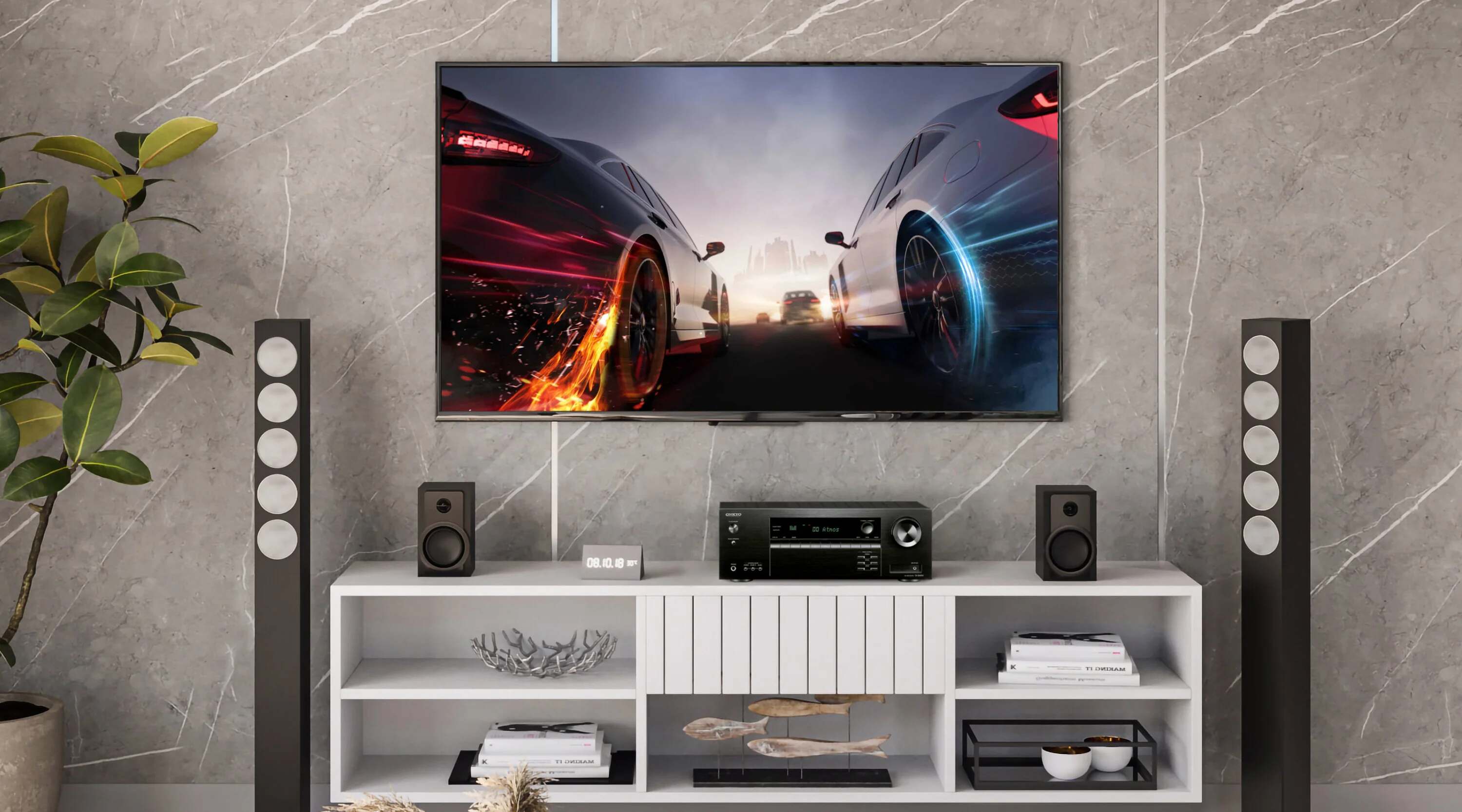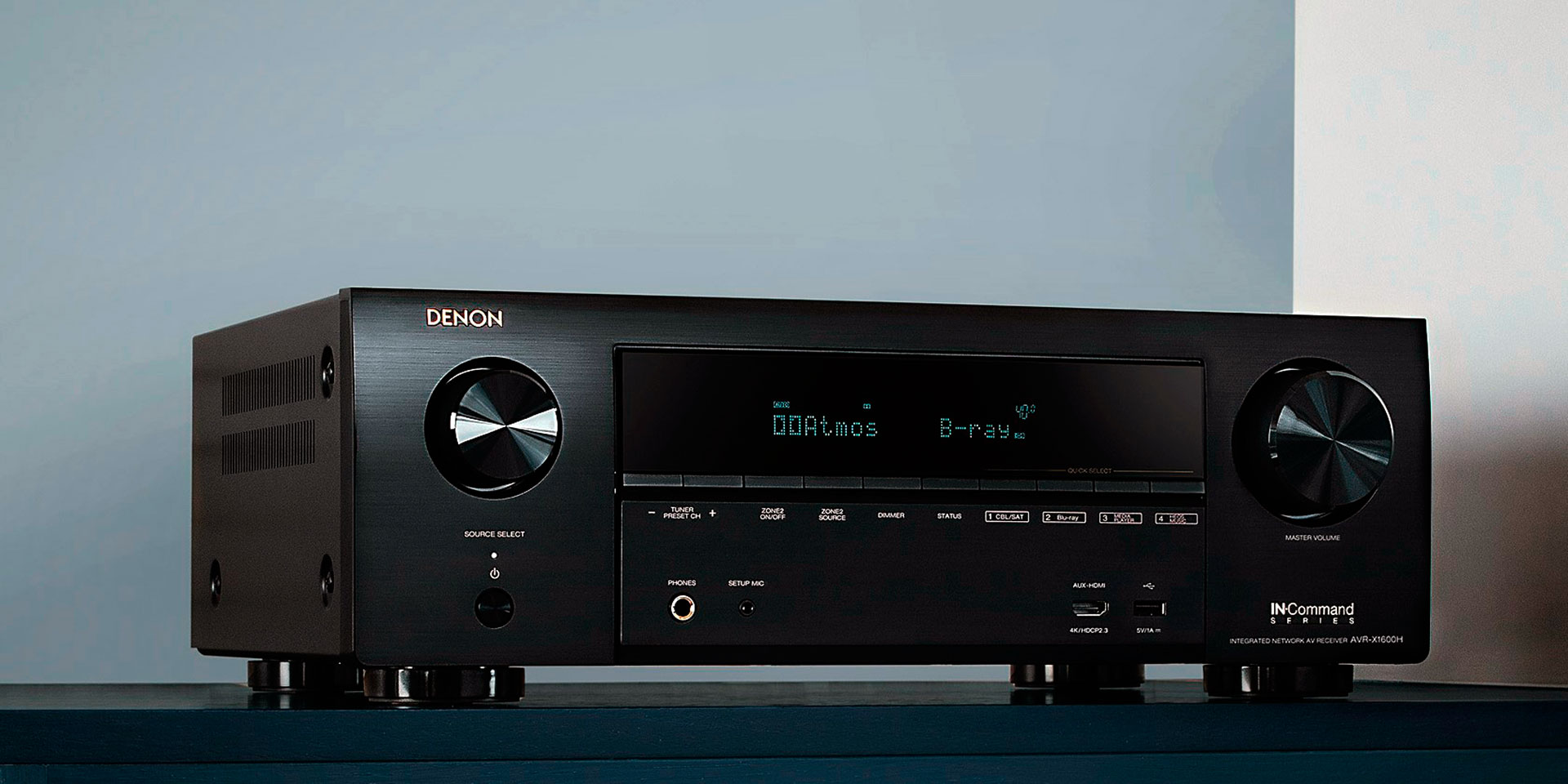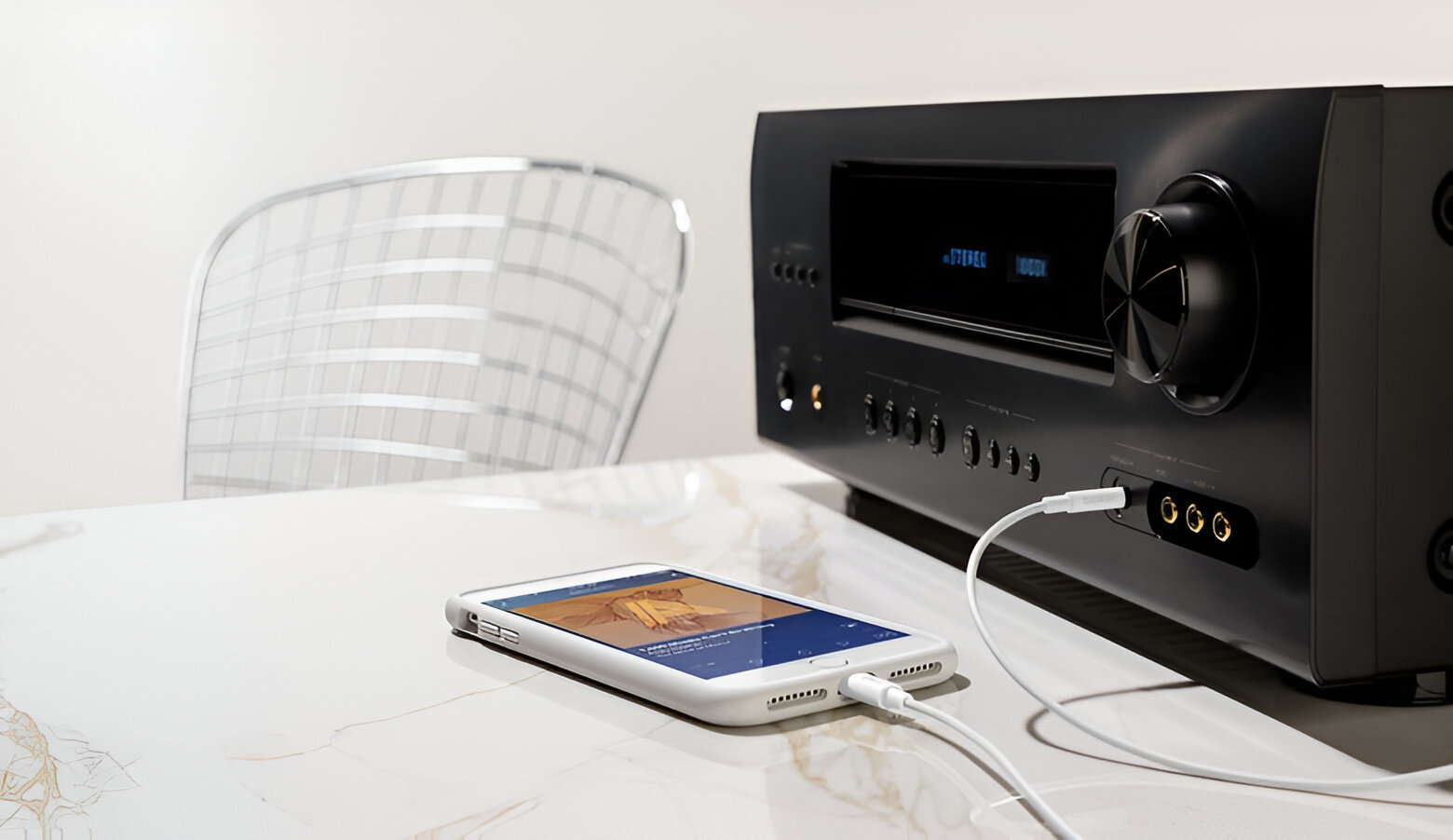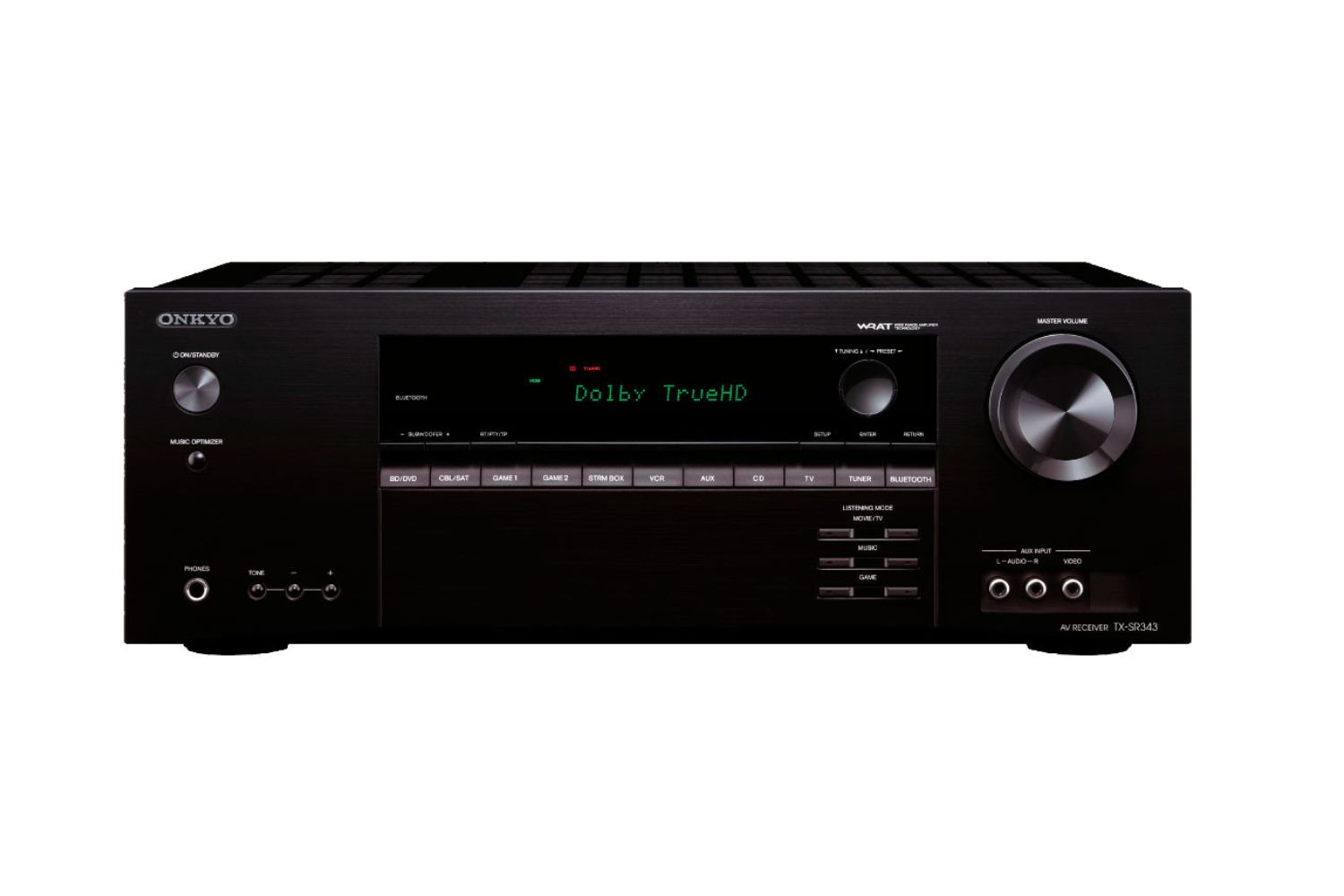Introduction
Welcome to the world of home entertainment, where the seamless integration of audio and video components elevates your viewing and listening experience. As technology continues to advance, the need for high-quality audio and video connections becomes increasingly essential. In this article, we will explore the significance of video connections to an AV receiver, shedding light on their purpose, types, and benefits.
A Video Connection to an AV Receiver serves as a pivotal link in creating a comprehensive home theater system, allowing you to enjoy immersive audio and stunning visuals. Whether you are a cinephile, a gaming enthusiast, or a music aficionado, understanding the role of video connections in enhancing your entertainment setup is crucial. From HDMI to component and composite connections, each option offers unique advantages that contribute to an enriching multimedia experience.
Join us as we delve into the world of AV receivers and video connections, unraveling the intricacies of these essential components and uncovering the benefits they bring to your home entertainment ecosystem. Let's embark on this enlightening journey to discover the power of seamless video connections in optimizing your audiovisual enjoyment.
What is an AV Receiver?
An AV (Audio/Video) Receiver serves as the central hub of a home theater system, acting as a versatile and powerful component that harmonizes various audio and video sources. This multifaceted device combines the functionalities of a radio tuner, audio amplifier, and video switcher, offering a comprehensive solution for managing and enhancing your entertainment setup.
Equipped with multiple audio and video inputs, an AV receiver serves as a unifying interface for connecting diverse media sources such as Blu-ray players, gaming consoles, streaming devices, and cable boxes. It also facilitates the seamless integration of surround sound systems, speakers, and displays, ensuring a cohesive and immersive audiovisual experience.
One of the key features of an AV receiver is its ability to decode and process audio signals, supporting various surround sound formats such as Dolby Atmos, DTS:X, and IMAX Enhanced. This capability enables the creation of a captivating and spatial audio environment, elevating the realism and impact of movie soundtracks, music, and gaming effects.
Furthermore, AV receivers often incorporate advanced video processing technologies, including upscaling, HDR (High Dynamic Range) pass-through, and support for 4K Ultra HD content. By optimizing video signals and ensuring compatibility with modern display devices, these receivers contribute to delivering stunning visual quality and seamless connectivity.
With the integration of network connectivity and smart features, modern AV receivers offer access to streaming services, wireless audio playback, and voice control, expanding the scope of entertainment options and enhancing user convenience. Additionally, many AV receivers are designed to support multi-room audio setups, enabling the distribution of audio and video content to different zones within a home.
Whether you are a movie enthusiast, a music lover, or a gaming connoisseur, an AV receiver stands as a fundamental component that unifies and enhances the audio and video elements of your home entertainment system, creating an immersive and captivating sensory experience.
What is a Video Connection to an AV Receiver?
A video connection to an AV receiver serves as a crucial bridge between your audiovisual sources and the central processing unit of your home entertainment system. It enables the seamless transmission of video signals from various input devices to the AV receiver, where they are processed, enhanced, and then routed to the display device, such as a television or projector.
By utilizing a video connection, you can consolidate and streamline the wiring and connectivity of your home theater setup, reducing clutter and simplifying the overall configuration. This not only contributes to a cleaner and more organized entertainment space but also facilitates easier troubleshooting and maintenance of the system.
Furthermore, a video connection to an AV receiver plays a pivotal role in synchronizing the audio and video components of your multimedia experience. It ensures that the visual content and accompanying soundtracks are harmoniously integrated, delivering a cohesive and immersive viewing and listening experience.
Video connections also enable the AV receiver to apply advanced video processing and enhancement techniques to the incoming signals. This includes upscaling lower-resolution content to match the native resolution of the display, optimizing color reproduction, and supporting high dynamic range (HDR) formats for a more lifelike and vibrant visual presentation.
Moreover, the utilization of video connections allows for the seamless integration of multiple video sources, such as gaming consoles, Blu-ray players, media streaming devices, and cable/satellite boxes, into a unified entertainment ecosystem. This versatility empowers users to effortlessly switch between different media sources without the need for complex manual reconfigurations.
Whether you are enjoying the latest blockbuster movie, engaging in intense gaming sessions, or indulging in streaming content, a reliable and efficient video connection to your AV receiver ensures that the visual component of your entertainment experience is optimized, synchronized, and seamlessly delivered to your display device.
Types of Video Connections
Video connections come in various forms, each offering distinct features and capabilities to accommodate different devices and display technologies. Understanding the types of video connections available for AV receivers is essential for optimizing the visual performance and compatibility of your home entertainment setup. Here are some common types of video connections:
- HDMI (High-Definition Multimedia Interface): HDMI has become the standard bearer for high-definition audio and video transmission. It supports high resolutions, including 4K Ultra HD and 8K, along with high dynamic range (HDR) formats. HDMI also carries audio signals, eliminating the need for separate audio cables.
- Component Video: This analog video connection consists of three separate cables for transmitting video signals in red, green, and blue components. While it doesn’t support audio, component video is capable of delivering high-definition video, making it a viable option for older devices or specific AV setups.
- Composite Video: Comprising a single cable with yellow RCA connectors, composite video is an older analog standard that carries standard-definition video signals. It is suitable for connecting legacy devices that lack modern video outputs.
- DisplayPort: Commonly found in computer monitors and some AV equipment, DisplayPort offers high-resolution video and audio transmission, often supporting advanced features such as adaptive sync technology for smoother visuals during gaming.
- VGA (Video Graphics Array): While primarily used for computer displays, VGA can also be utilized with certain AV receivers and projectors. It supports analog video signals and is gradually being replaced by digital interfaces like HDMI and DisplayPort.
Each type of video connection has its own strengths and limitations, and the choice of connection depends on the compatibility of the source device, the display device, and the AV receiver. When selecting a video connection, it’s important to consider factors such as resolution support, audio compatibility, and the specific requirements of your home theater configuration.
How to Connect a Video Source to an AV Receiver
Connecting a video source to an AV receiver involves a series of straightforward steps that ensure the seamless transmission of audio and video signals within your home entertainment system. Whether you are setting up a new AV receiver or integrating additional video sources, the following guidelines will help you establish a reliable and efficient connection:
- Identify the Video Output of the Source Device: Begin by locating the video output port on the source device, such as a Blu-ray player, gaming console, or media streaming device. Common video output interfaces include HDMI, component video, composite video, and DisplayPort.
- Choose the Corresponding Input on the AV Receiver: Next, identify the matching video input on the AV receiver where you intend to connect the source device. Most AV receivers feature multiple video input options, labeled accordingly, to accommodate various connection types.
- Select the Appropriate Video Cable: Based on the video output of the source device and the available inputs on the AV receiver, choose the suitable video cable for the connection. For example, if both the source device and the AV receiver support HDMI, use an HDMI cable for optimal signal transmission.
- Establish the Physical Connection: Connect one end of the video cable to the video output port of the source device and the other end to the corresponding video input on the AV receiver. Ensure a secure and snug connection to prevent signal interference or loss.
- Configure the AV Receiver: Access the AV receiver’s settings or input selection menu to designate the connected video input for the respective source device. This step ensures that the receiver recognizes and processes the incoming video signals correctly.
- Verify the Display Connection: Finally, connect the AV receiver to the display device, such as a television or projector, using a compatible video cable. This link completes the chain of video transmission, allowing the processed signals to be showcased on the display.
By following these steps, you can effectively establish a video connection from your source devices to the AV receiver, enabling the seamless integration and processing of audiovisual signals within your home theater environment. Whether you are enjoying movies, gaming, or multimedia content, a well-executed video connection ensures that your entertainment experience is immersive and visually captivating.
Benefits of Using a Video Connection to an AV Receiver
Utilizing a video connection to an AV receiver offers a myriad of benefits that significantly enhance the quality, versatility, and overall experience of your home entertainment setup. From improved visual performance to simplified connectivity, the advantages of incorporating video connections into your AV receiver ecosystem are manifold:
- Optimized Video Processing: By routing video signals through the AV receiver, you can leverage its advanced processing capabilities to enhance the quality of the visual content. This includes upscaling lower-resolution video, supporting high dynamic range (HDR) formats, and applying video enhancement algorithms for a more immersive viewing experience.
- Consolidated Connectivity: Video connections streamline the wiring and connectivity of your home theater system, reducing clutter and simplifying the setup process. This organized approach not only improves the aesthetic appeal of your entertainment space but also facilitates easier troubleshooting and maintenance.
- Unified Control and Switching: With video connections in place, the AV receiver serves as a central hub for managing and switching between multiple video sources. This centralized control eliminates the need for manual cable swapping and simplifies the process of accessing different media devices, enhancing user convenience and flexibility.
- Synchronized Audiovisual Experience: Video connections ensure that the audio and video components of your multimedia content remain synchronized, delivering a cohesive and immersive viewing and listening experience. This synchronization is essential for enjoying movies, gaming, and other forms of multimedia entertainment without disruptions or delays.
- Compatibility and Future-Proofing: Many modern video connections, such as HDMI, support the latest display technologies, resolutions, and audio formats. By leveraging these connections, you can ensure compatibility with current and future devices, effectively future-proofing your home entertainment system and avoiding obsolescence.
- Enhanced Flexibility and Expansion: Video connections enable the seamless integration of various video sources, allowing for greater flexibility in expanding your entertainment ecosystem. Whether it’s adding new gaming consoles, media players, or streaming devices, the AV receiver accommodates diverse inputs and expands your entertainment options.
By harnessing the benefits of video connections to an AV receiver, you elevate the visual performance, convenience, and adaptability of your home entertainment environment, creating a captivating and immersive multimedia experience that caters to diverse preferences and technological advancements.
Conclusion
In the realm of home entertainment, the integration of video connections with AV receivers stands as a pivotal enabler of immersive and high-quality audiovisual experiences. From the versatile capabilities of AV receivers to the diverse types of video connections available, the synergy between these components elevates the performance and versatility of modern home theater setups.
As technology continues to advance, the significance of video connections to AV receivers becomes increasingly pronounced. These connections not only facilitate the seamless transmission of video signals but also empower users to optimize visual quality, streamline connectivity, and future-proof their entertainment systems against evolving standards and formats.
By understanding the intricacies of video connections and their role in harmonizing audiovisual elements, enthusiasts and casual users alike can embark on a journey to create captivating multimedia environments that cater to their diverse entertainment preferences. Whether it’s enjoying the latest blockbuster movie in stunning 4K resolution, immersing oneself in the world of gaming with fluid visuals, or simply indulging in multimedia content, the integration of video connections with AV receivers paves the way for a truly enriching and seamless entertainment experience.
As you explore the possibilities of video connections and AV receivers within your home entertainment ecosystem, remember that the synergy between these components extends beyond mere technical functionality. It embodies the essence of modern entertainment, where audio and visuals converge to create immersive, captivating, and memorable experiences that resonate with enthusiasts and casual users alike.
Embrace the power of video connections to AV receivers, and unlock a world of boundless entertainment possibilities that enrich your lifestyle and redefine the way you engage with multimedia content.







